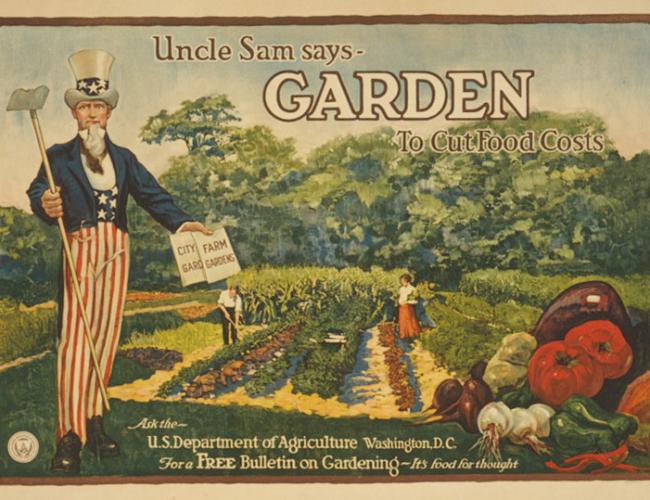How to Create a Garden Plan Without a Map
It can be difficult to create a garden plan if you don’t have a map of your space. There are several things to consider when creating a plan, such as the amount of space available for each component and future plans for the garden. If you don’t have a map, you can create one in a computer program such as EdrawMax or Pinterest. Regardless of which program you use, it is important to understand how to create a plan and how to map it to create the ultimate garden plan.
Steps to creating a garden plan
When creating a garden plan, there are a few steps you need to take. First, you need to know the size and shape of your yard and any other features that will affect the plants you choose. Many people think that they have a square, rectangular yard, but once you take a look at a scale plan, you may find that your yard is not quite what you thought it was.
After determining the size of your garden, you need to decide the types of plants you want to use. Determine which plants will grow to what size and how often they will bloom. Planting with the appropriate size will help you avoid mistakes such as overplanting or placing plants too close to paths or buildings. Once you know what types of plants you want to grow, you can create a list of the kinds of plants you plan on using.
- Frost, Adam (Author)
- English (Publication Language)
- 256 Pages – 02/04/2020 (Publication Date) – DK (Publisher)
Last update on 2025-12-16 / Affiliate links / Images from Amazon Product Advertising API
Once you know the type of plants you want, you can start planning the layout. You can start by creating a wish list, but keep in mind that you may not get everything on your list. The next step is to find pictures of similar gardens and draw them out. Your dream garden will be much more attractive if you’ve already thought about the different elements and have an idea of where they’ll go.
The next step is to decide on the style of the garden. A garden that is designed to attract butterflies and other native animals and provide food for the local fauna is an ideal environment. Native plants will help with this as well. In order to make your garden plan as detailed as possible, you need to measure your yard and draw a scale model. If you’re unfamiliar with drawing plans, you can consult a landscape designer to help you decide on the right plant material and placement.
Creating a garden plan is an important first step in any gardening project. First, you need to determine how many plants will be needed to complete the project. You can draw a scale drawing to help you with this, or you can use freeform bubbles to sketch the garden. Once you have the layout, you can estimate the number of plants you need. It will help you determine the many plants you need for your project.
Plants to include in the plan
Once you have chosen the size and location of your garden, the next step is to decide what types of plants you would like to grow. Then, draw out the garden outline and indicate what types of plants you will be growing in each area. Companion planting is an excellent way to mix certain types of plants together. To find out which plants are compatible, visit the National Sustainable Agriculture Information Service’s database. You should rotate crops every year so that no one species grows in the same spot for more than three years.
You should consider the height of your plants when planning your planting scheme. A general garden plan would include plants under one foot in the front, three feet in the rear, and 1 to 3 feet in the center. However, strict guidelines can create a garden that looks like a staircase. Try to balance tall and short plants’ height to create a varied topography. If you want to use a single tall plant to create a dramatic focal point, select one with a more simple form.
Research each plant’s growth requirements. Some plants require more soil, while others can live in a small pot. Keep costs down by ordering seeds and other materials early. If you plan to plant several different types of plants in your garden, be sure to research them carefully before choosing the type of soil and pots you’ll need. By doing so, you’ll know exactly which plants will thrive in your garden, and you’ll be able to purchase them at the right time.
Creating a garden plan with EdrawMax
Creating a garden plan is a very rewarding project, whether you’re a landscape architect or an amateur who has always dreamed of having a lush green garden. EdrawMax’s easy-to-use interface allows you to design everything from rooftop gardens to detailed landscapes. With built-in symbols and templates, you can quickly create a plan for your dream garden. Once you know what you want, you can quickly drag and drop the components into your plan.
When creating a garden plan, you can plot different fixed aspects such as the garden’s layout, planting beds, and paths. If you’re more technical, you can include a swimming pool or a pavilion, as well as a variety of other garden features. You can export your finished garden plan to various formats, including PDF, HTML, and SVG. For presentations, you can use the program’s Presentation Mode to export your plan to a web page or print it out.
When creating a garden plan, you should consider the available space and how you will use it. Take into account the HOA rules and regulations, as well as the amount of sunlight your garden gets. During this step, you should also take note of the various components, such as trees, walls, and pottery. By making notes, you will better understand the space you need to spend on your garden.
Using the SmartDraw drawing program, you can easily create a garden plan using two-dimensional or three-dimensional models. SmartDraw supports US/Imperial and metric measurement units. Additionally, you can also draw photos and hyperlinks with the software. Creating a garden plan with EdrawMax makes the process of visualizing the finished garden easier than ever. So, if you are ready to get started, download EdrawMax today!
Once you’ve selected an EdrawMax design, it’s time to add some details. You’ll need to factor in your garden’s water requirements and the sun exposure. You should also consider the microclimate and the soil type. Depending on your climate, you may also want to plant plants with different water needs. Make sure to account for these things and make sure you have a plan for each of these factors.
Creating a garden plan with Pinterest
If you want to create a garden plan, Pinterest is one of the best resources. You can browse images and find inspiration for your plans by following a few different boards. This platform is great for organizing your garden projects because it breaks them down into small, manageable tasks. Using the boards will help you keep track of everything from the design concept to the actual implementation. You can also use them to get design ideas for other aspects of your home, such as decorating the bathroom.
Using the search function, you can look for images of well-designed gardens and pin them to your board. Many garden designers take great photographs to post on their websites and use these as inspiration for Pinterest. But if you’d like to stand out from the crowd, use original photographs of your projects. Since 90% of your Pins will be repinned, you can create original content for your pins. The key to success is providing new content that people want to see.








